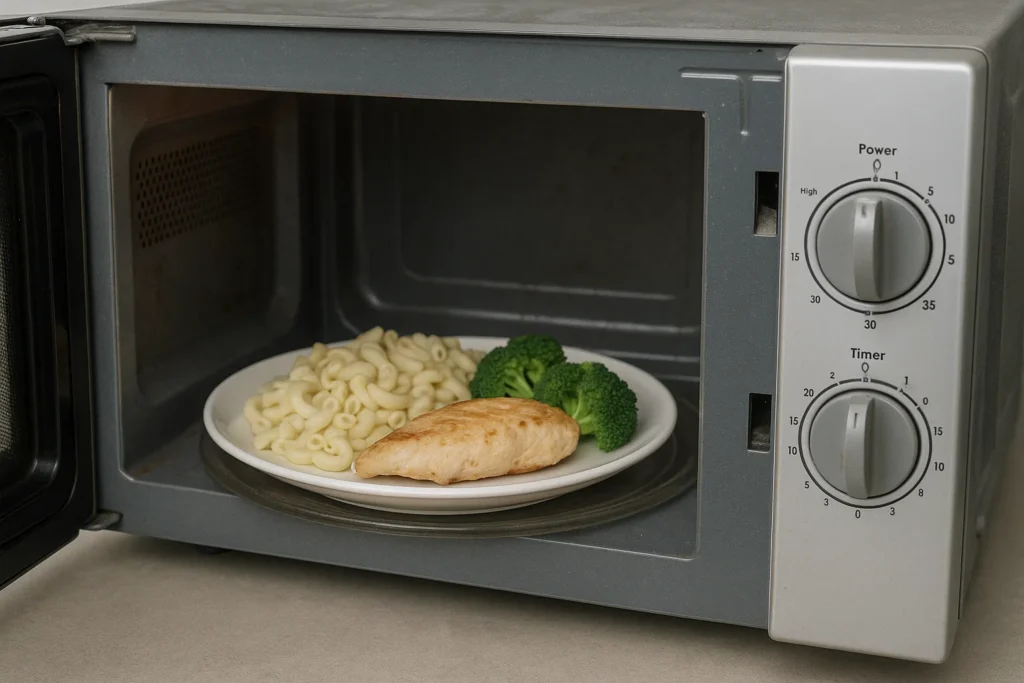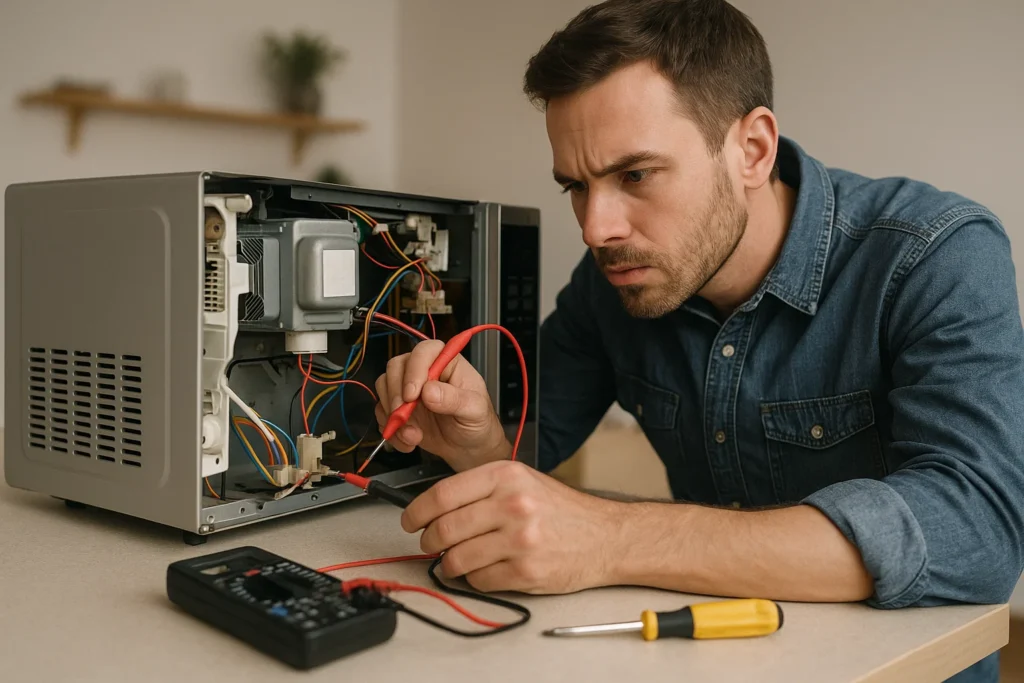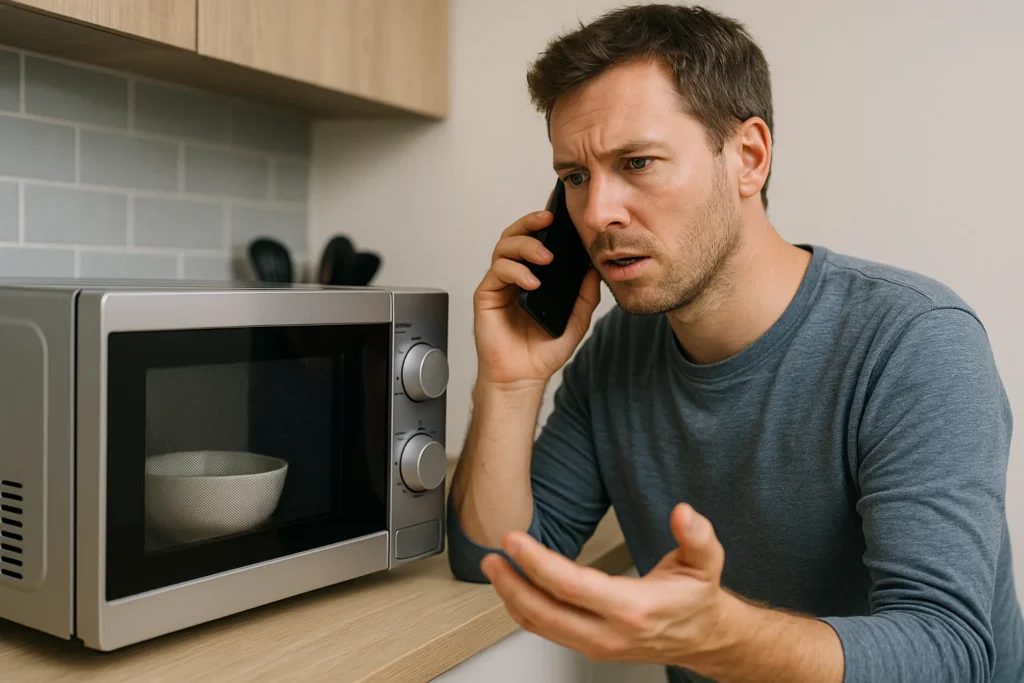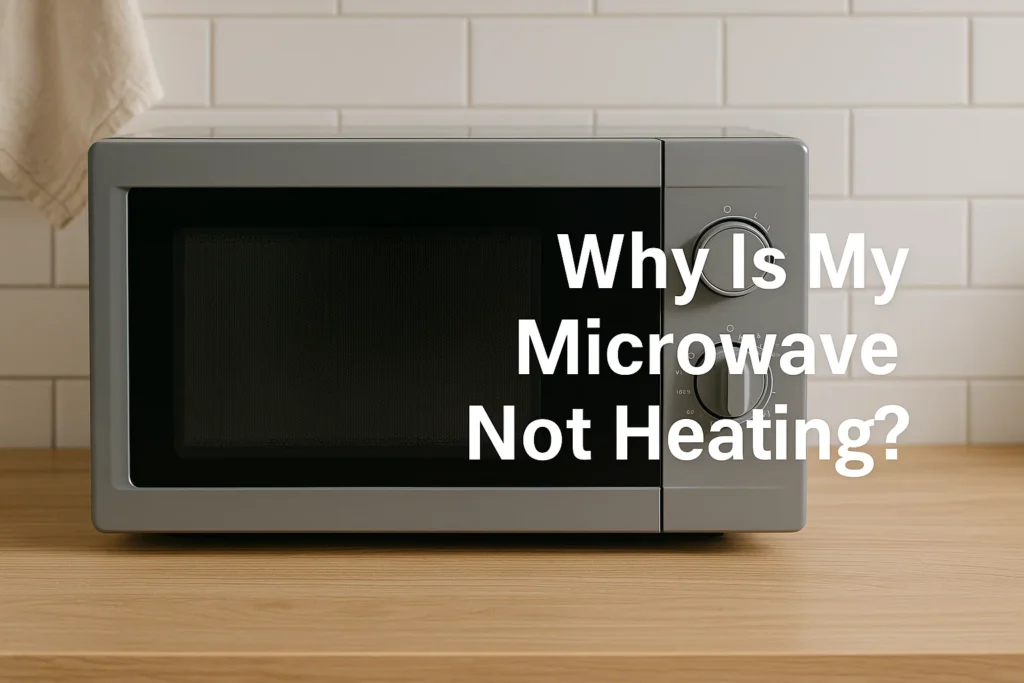Common reasons your microwave stops heating food
When a microwave “runs but doesn’t heat,” the fault is usually in the high-voltage circuit. A worn magnetron stops generating microwaves; a failed HV diode or dried-out capacitor starves the magnetron of power; on inverter models the inverter board or transformer may quit. Misaligned door interlock switches, a tripped thermal cutoff, or a control-board relay can also block heat. Sometimes it’s simpler: the power level is set too low, Demo mode is enabled, or metal/foil cookware is reflecting energy so nothing warms up.
Signs your magnetron might be failing
New, louder humming under load, food that stays barely warm after a normal cycle, heating that starts and stops within a few seconds, or a faint hot-electronics smell are classic tells. Occasional sparking near the waveguide can happen, though it isn’t exclusive to magnetron failure.
Heating issues vs. power issues
With a heating fault, the clock, light, fan and turntable look normal while the food stays cold. With a power fault, the unit won’t start, trips the breaker, or the display is dead—an entirely different diagnosis.

How to Troubleshoot a Microwave That’s Not Heating
Quick checks you can do at home (no tools)
Run a “water test”: a mug of room-temp water should feel noticeably hotter after 60–90 seconds on High. Confirm Power Level is 100% and you didn’t set a timer instead of a cook cycle. Close the door firmly and watch whether the light and fan behave consistently. For a countertop unit, plug it directly into a dedicated outlet (no extension cord). Peek at the waveguide cover; clean grease carefully and replace it if it’s scorched or cracked. Make sure Demo/Showroom mode is off in Settings.
Does resetting help?
Try a soft reset (Cancel/Stop, then a fresh cook on High) or unplug the oven for a couple of minutes and plug it back in. If heat returns briefly and then disappears again, that usually points to a failing part rather than a settings glitch.
Testing door switches and fuses—safely
You can infer a door-switch issue from the way the light/fan react, but do not open the cabinet. The HV capacitor can retain a lethal charge even when unplugged. Anything beyond external checks belongs to a qualified technician.
Fixing a Microwave That Isn’t Heating
What you can safely fix yourself
User-serviceable items are limited to restoring correct settings, cleaning or replacing a clip-in waveguide cover (if your manual allows), reseating the turntable and roller ring, and replacing the bulb. Components inside the metal shell—magnetron, diode, capacitor, transformer/inverter, thermal cutouts—are pro-only.
Parts that commonly fail
A dead or weak magnetron, an open/shorted HV diode, a failing HV capacitor, or an inverter board on modern models are the usual suspects. Sometimes a thermal cutoff opens after a past overheat; control-board faults are less common but possible.
Repair vs. replace
For basic countertop ovens under roughly $150–$200, replacement often makes more economic sense than a major HV repair. For over-the-range or built-in units that cost several hundred dollars, a repair can be worthwhile, especially if the oven is relatively new and otherwise solid.

Microwave Not Heating but Everything Else Works
Why the light and turntable still run
Those features use low-voltage circuits. Heating depends on a separate high-voltage section, so everything can look “alive” while the food remains cold.
What this symptom usually points to
Most often: a failed diode or capacitor, a magnetron at end-of-life, a misaligned door interlock, an open thermal cutoff, or an inverter fault on inverter models.
Brand-Specific Heating Issues
Samsung: common patterns
Check Eco/Demo modes and power level first. Many Samsung units are inverter-based; an inverter failure can mimic a bad magnetron and often shows up as a start-then-stop under load.
LG: what to check
LG inverter models may show weak heating at lower power settings as the inverter degrades. Verify child lock and power level; if symptoms persist, professional diagnosis is the next step.
Whirlpool or GE: typical faults
On classic transformer designs, the diode and capacitor are frequent offenders. If the breaker trips when heating starts, suspect a short in the HV section and stop using the unit until it’s serviced.
Safety Tips Before Trying Repairs
High-voltage hazards
Microwaves can store 2,000–5,000 volts in the HV capacitor after unplugging. Opening the cabinet without training and proper discharge procedures is dangerous and potentially fatal.
When to call a professional
Get service if you notice a new loud hum, hot-electronics smell, visible arcing, shutdown a few seconds into heating, damage or looseness at the door/latch, or repeated breaker trips.

Preventing Heating Problems in the Future
Simple habits that help
Keep the cavity and waveguide cover clean; never run the oven empty; use microwave-safe glass or ceramic (no metal or foil); leave ventilation space around the unit; avoid slamming the door; cover splattery foods to reduce mess and hotspots.
Foods and containers that cause trouble
Metal, foil, twist ties, or travel mugs with metal liners reflect energy and can cause arcing. Sealed containers and eggs in the shell can explode. Extremely dry items heated for a long time can overheat the cavity. Follow the do’s and don’ts in your user manual.
